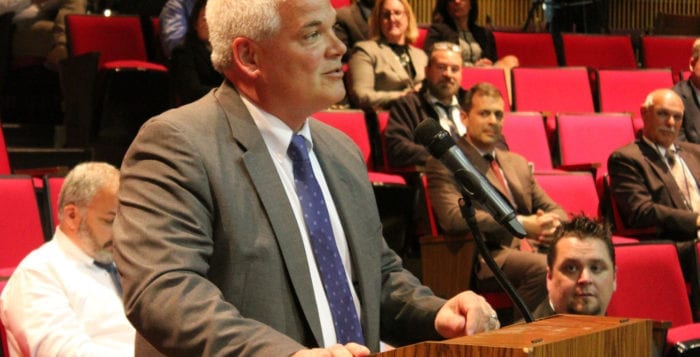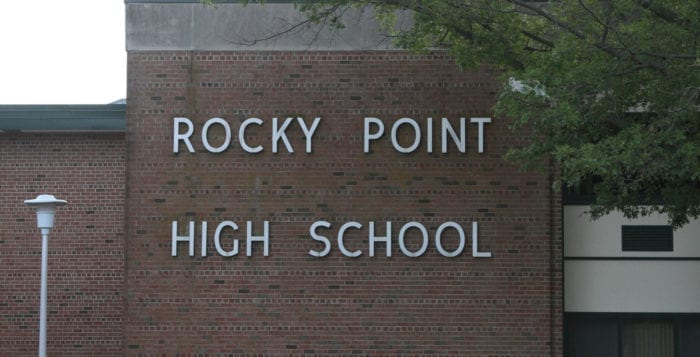The Shoreham-Wading River school district is looking to get smart, with the help of New York State funds.
The district is finalizing plans to use the state’s Smart School Bond Act, which makes up to $2 million available for every school district in the state to improve its technology and security infrastructure. The district has been allocated $1,003,429 to make improvements to district computer server infrastructure; purchase new computers, projectors, security cameras; and to install a new security booth at the entrance of the high school parking lot.
The district laid out its plans at an Oct. 23 board meeting, where Peter Esposito, the director of technical services, said the district plans to replace several pieces of data storage equipment to maximize storage capability in switch closets for $430,000. The district also plans to replace all district computers, 450 in all, last upgraded in 2013, with more modern machines for $425,000. The district will replace its 120, 10-year-old classroom projectors with new LCD projectors for $65,000 and add additional security cameras for $18,000.
“It’s been on my desk for the last three years, so it would be good to move forward with this,” Esposito said.
A prefabricated visitors booth for the high school parking lot will be installed for $65,000. While Superintendent Gerard Poole said the district is still working out the final plans for the booth, it could possibly be located along the high school driveway where the road forks to the administration entrance and to the main parking lot. The booth could include a guard-operated gate so school officials can monitor who is entering the high school grounds, even if they are going to use the trails to the south of the school or the North Shore Public Library.
“The way we envision it is it will help somebody get to the high school, get to the library or make the left to come up to administrative offices,” Poole said.
The final version of the plan will be submitted to New York State by the end of November, but Poole said the committee that reviews the plan has been taking about one year on average to approve those documents. He said he expects the visitors booth to be installed sometime after the district revitalizes the high school parking lot over the summer as part of a 2015 capital bond referendum, but that those plans will be changed to allow for the new booth.
At prior board meetings residents have expressed frustration about new speed bumps installed on the driveway to the high school, saying they’re so hard and short that it forces most cars to slowly roll over them. Residents have said the slowdown has increased traffic going into the school, especially in early mornings, but the superintendent said the speed bumps are working as intended to slow down traffic to 15 mph or less. He added the school has had no problem getting all students in class by first period, though officials will be reviewing the safety protocols for the guard booth as the district develops plans for the new parking lot, with that stage of the bond project going out to bid in January.
At the October meeting, board President Michael Lewis asked if the computers the school would be buying would have to be replaced in another eight years. Alan Meinster, the assistant superintendent for curriculum, instruction and assessment, said there was no way to tell where technology would go in that amount of time.
“I can promise you if you do this in another eight years you will have the same budget,” Meinster said. “I don’t know where we’re going to be in the next eight years technology wise — what we’re going to be using later on.”
Glen Arcuri, the assistant superintendent for finance and operations, said the school could pay for future technology through capital reserve funds.
The investment plan is available to view on the district’s website, and district officials are currently asking for feedback on the proposal. The board will vote on the finalized version of the plan at its Nov. 27 board meeting.








